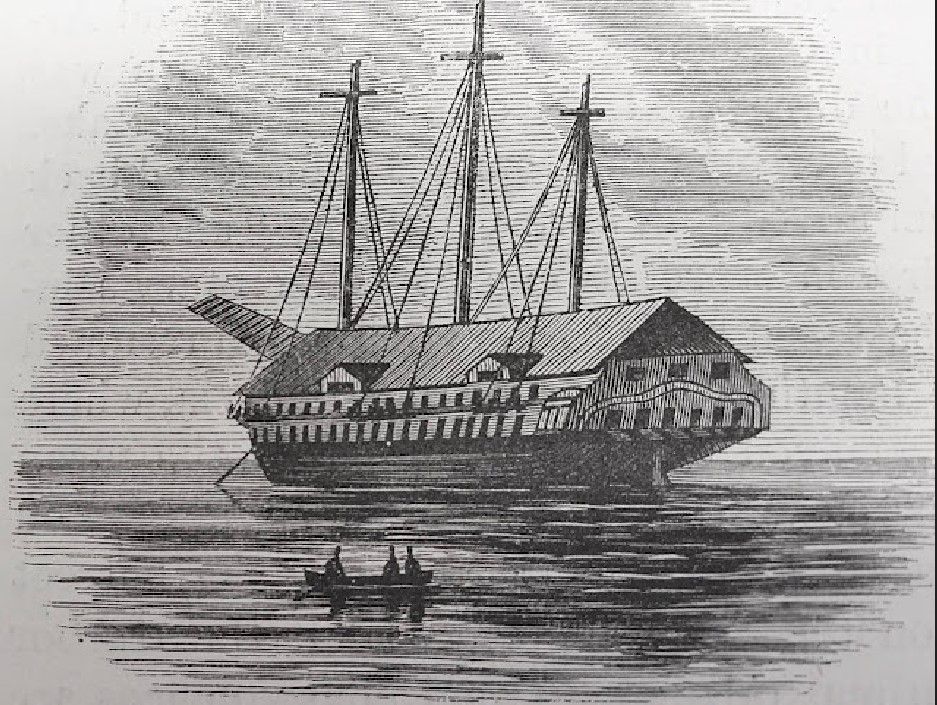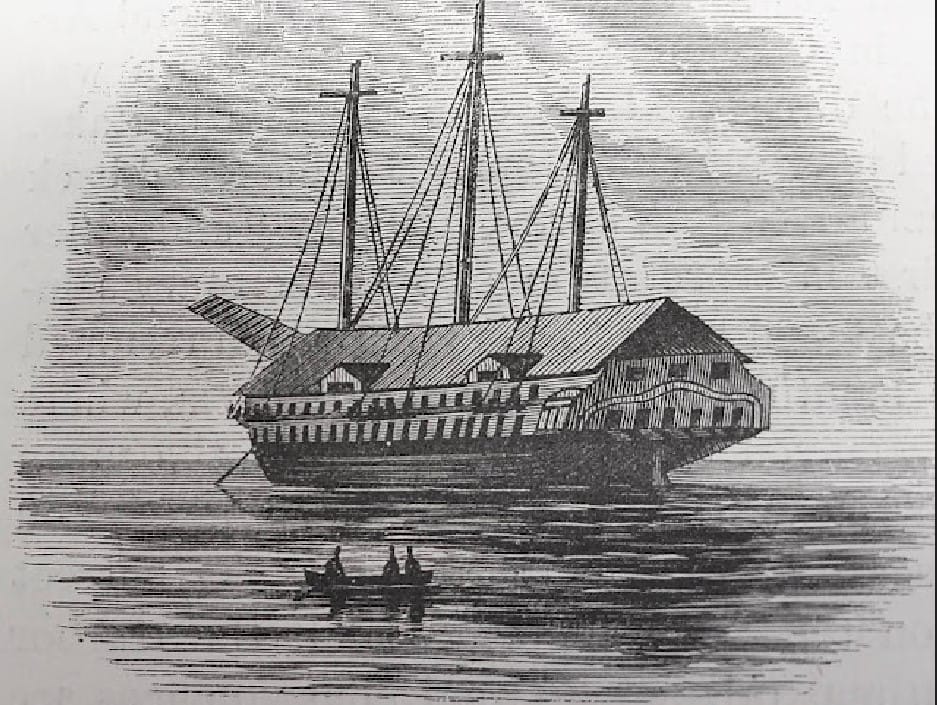"USS Superior" Celebrates the End of the War of 1812
by: Richard Palmer
The Treaty of Ghent ended the War of 1812 before what could have been a disastrous confrontation occurred on Lake Ontario. As late as February 1815, there were no less than 600 ship carpenters at Sackets Harbor building warships that could compare with anything built for ocean duty.
In northern New York State, the War of 1812 was a battle of shipbuilding, with each side endeavouring to build the biggest armada of fighting ships ever seen on the Great Lakes.
One of those ships was the battleship USS Superior, which could cause much damage with its thirty 32-pounders, two long 24-pounders, and twenty-six 42-pounder carronades. She was a large vessel of 1,580 tons, built under the direction of noted shipbuilder Henry Eckford. She had a crew of 500 officers and enlisted men and was heavily armed. She was commanded by Lieutenant John H. Elton and participated in a military blockade of Kingston during the summer of 1814. That battle was an attempt to lure out Sir James Lucas Yeo's British fleet for a decisive action.
Of course, that battle never occurred, so the Superior sailed Lake Ontario that summer and returned to Sackets Harbor that fall.
News of the end of the war was slow to reach Sackets Harbor. But when it did, it was a cause for celebration. The frigate Superior was chosen to host an event, which occurred on March 1, 1815.

Celebration Accounts
The following are two contemporary accounts of that event. The first was written in the Onondaga Register, published on Wednesday, March 15, 1815, and reprinted in the Utica Patrol.
"Grand Ball on Board the Superior, at Sackets Harbor" Watertown, March 3.
“A most splendid ball was given on board the U.S. Ship Superior, on the first inst. by the wardroom officers of that ship. That fine vessel was fitted up for the occasion in a style of uncommon elegance and taste. Never did I behold a more brilliant scene than was presented on the upper deck of that ship on that night of gladness and festivity.
A most spacious and elegant room was formed by means of canvass, which, being lined by the various flags and signals of the fleet, gave it an air of magnificence and splendor seldom surpassed. It was illuminated in a style of peculiar brilliancy by upwards of two hundred waxed candles, many of them so placed in the guns of the marines as to reflect the brightest light from their polished surfaces; other decorations, most appropriately selected and judiciously placed, were displayed in various parts of the room.
In fact, the whole preparations and arrangements were such as to do the highest credit to the taste and talents of the young gentlemen who compose the wardroom of that ship. There was a richness, a neatness and an elegance about the supper, which was truly astonishing, considering it was on board a vessel in a remote section of the country, till lately almost unknown, and now but badly supplied with a market.
The company consisted of about 300, of whom about 100 were ladies, collected from the flourishing villages of Watertown, Brownville, and Sackets Harbor. The whole world may be challenged to produce another instance of a country so new, so remote, so lately a howling wilderness, exhibiting such an assemblage of beauty, fashion and taste as the ladies presented on this occasion.
This may be deemed flattery, or boasting in a resident of the country, but the writer of this appeals to the gentlemen present from almost all parts of the United States, to vouch for the truth of the assertion. They were honored by the presence of the commodore’s lay — as a compliment to whom, at this moment of joy, peace and hilarity, the ball was given. With the exception of two of three instances of distinguished females from abroad, the ladies were selected from the above villages.”
Sackets Harbor Account
The second account was written by a spectator and published in the Niles Weekly Register, on March 24, 1815.
SACKETS HARBOR. Extract of a letter from a gentleman at Sackets Harbor, to his friend in Baltimore, dated March 6, 1815.
"Having seen in the newspapers various manifestations of joy on the return of peace, permit me to state what took place on its being received at Sackets Harbor.”
"On Wednesday afternoon, the 1st instant, Commodore Chauncey gave an excellent dinner to the officers of the navy, army and citizens, on board his flag ship the Superior. The same evening the ward-room officers gave a splendid ball and supper; the assemblage was numerous, nearly one hundred ladies, and upwards of two hundred and fifty gentlemen. The dancing was upon the upper deck, which was covered and completely enclosed by awnings, decorated with flags of the fleet. Four chandeliers were substituted military weapons, which were ingeniously placed; and, whilst they served to illuminate the ball, was an ornament, and added (in the eyes of the martial men) dignity to the scene. In short, the "tout ensemble" would have done honor to your city.”
"I would make a trip to Kingston, but the warm weather has raised the ice – the same cause has prevented Sir James and the commander of that place from paying a visit to our commodore."
“A gentleman who left Sackets Harbor on the 23d ult. informs, that a flag was to have been sent to Kingston the next day, supposed with the ratification of the treaty, which was believed to be in the possession of the commander, Colonel Mitchell. The lake was frozen across, and six deserters came in on the 22d. Six hundred carpenters were employed in building two lake Monsters, to carry 102 guns and 140 guns; they were planked up. It was not known whether the British were building more ships.”
The battleship Superior was one of several vessels mothballed at Sackets Harbor after the War of 1812. Eventually, she was scrapped. One wonders the feelings of relief there must have been, when the War of 1812 was declared over. There were a number of River families who had relatives on both sides and who now, after four long years, could reunite. No wonder there were celebrations!
By Richard F. Palmer
Richard F. Palmer is a retired newspaper editor and reporter, and he was well known for his weekly historical columns for the “Oswego Palladium-Times,” called "On the Waterfront." His first article for TI Life was written in January 2015, and since then, he has written a dozen-plus others. He is a voracious researcher, and TI Life readers benefit from his interests. (Please keep them coming Richard! History is important!)






Please click here if you are unable to post your comment.